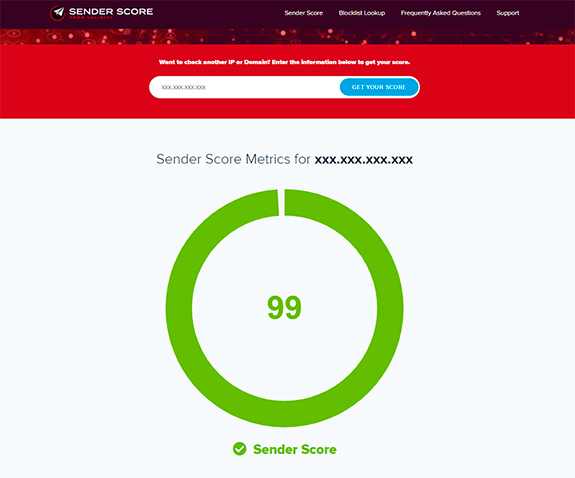Category: Email Marketing

Reputation is a way of measuring the trust placed in a sender and deciding whether to let their messages pass through without problems, consider them spam or block them because they do not pass the filter. It is a key factor in deliverability and is made up of several elements that are important to know in order to avoid getting a bad reputation.
We could start with the basic one, the one that any brand has and that makes a person decide to sign up and open your newsletters. But when we talk about reputation in email marketing, it is more a mathematical calculation than a user perception.
Sender reputation takes into account three parameters:
Each ISP has its own calculation for sender reputation, but Return Path's Sender Score tool can give you a reference. It is based on an anonymised dataset of more than 60 million email accounts from different ISPs. After entering our sending IP, the tool returns a number from 0 to 100: the higher the score, the higher the likelihood of high deliverability; a low score would indicate that reputation needs to be improved, although it does not necessarily mean that everything you send will go to the spam folder.

There are several ways to improve your reputation metrics. Implementing all of them will not guarantee you a sender score of 100, but you can improve it.
Also, as a prevention measure, look at your statistics: open rates, click-through rates, complaints and unsubscribes will help you detect that something is wrong with your campaigns. Reviewing them will help you ensure that future mailings comply with the recommendations we have given you and thus protect and improve your reputation as a sender.
Want to improve your sender's reputation? Contact one of our deliverability experts.
Do not miss anything from our blog and join our Telegram https://t.me/acrelianews
Haven't you tried Acrelia News yet?
If you like this post, you will like much more our email marketing tool: professional, easy to use.